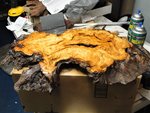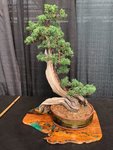FrankP999
Shohin
I will soon have access to some scrap & stumps from a small logging operation on a friend's property. I want to make some wooden slabs for display. If anyone has tips or suggestions I would appreciate them, The wood will be mostly pine with an occasional sweetgum or maple.
Thanks folks
Frank
Thanks folks
Frank


















